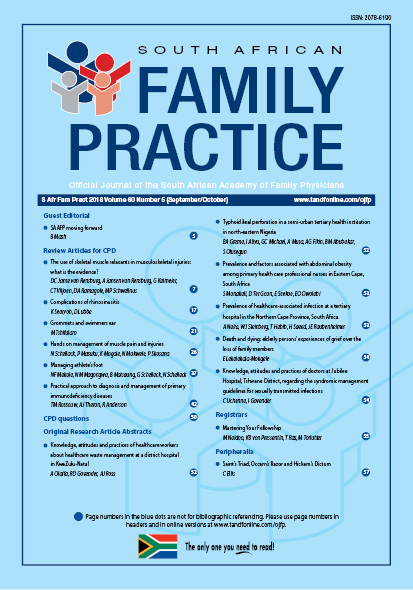Typhoid ileal perforation in a semi-urban tertiary health institution in north-eastern Nigeria
Abstract
Introduction: Typhoid ileal perforation is a very serious complication of typhoid fever and remains a significant surgical problem in developing countries like Nigeria, where it is associated with higher mortality and morbidity, due to lack of adequate clean drinking water, poor sanitation and lack of access to health facilities in remote areas and delays in hospital presentation.
Materials and methods: This was a retrospective study; all patients treated for typhoid ileal perforation at the centre in the period from January to December 2016 were included.
Results: There were 22 (59.5%) males and 15 (40.5%) females, with a male to female ratio of 1.5: 1. The ages ranged from 5 to 49 years with mean of 16.5± 9.2 years. The month of October recorded the highest cases of typhoid ileal perforation. Abdominal pain, anorexia, fever and abdominal swelling were the most common symptoms reported by the subjects. The number of ileal perforations was from 1 to 7 with mean of 2.0 ± 1.3; however, the majority had a single perforation. In addition, excision and simple closure was the most common surgery performed in these cases. Operation site infection was the most common complication in this study. Furthermore, the majority of cases were successfully discharged while eight deaths were recorded.
Conclusion: Typhoid ileal perforation was most common among males; abdominal pain, swelling and fever were common findings; single site perforation was the most common intra-operative findings and excision and simple closure was the most common operative procedure. Therefore early presentation, adequate resuscitation and lower number of ileal perforations are associated with better prognosis.
Full text of the research articles are available online at S Afr Fam Pract 2018; DOI: 10.1080/20786190.2018.1481604

